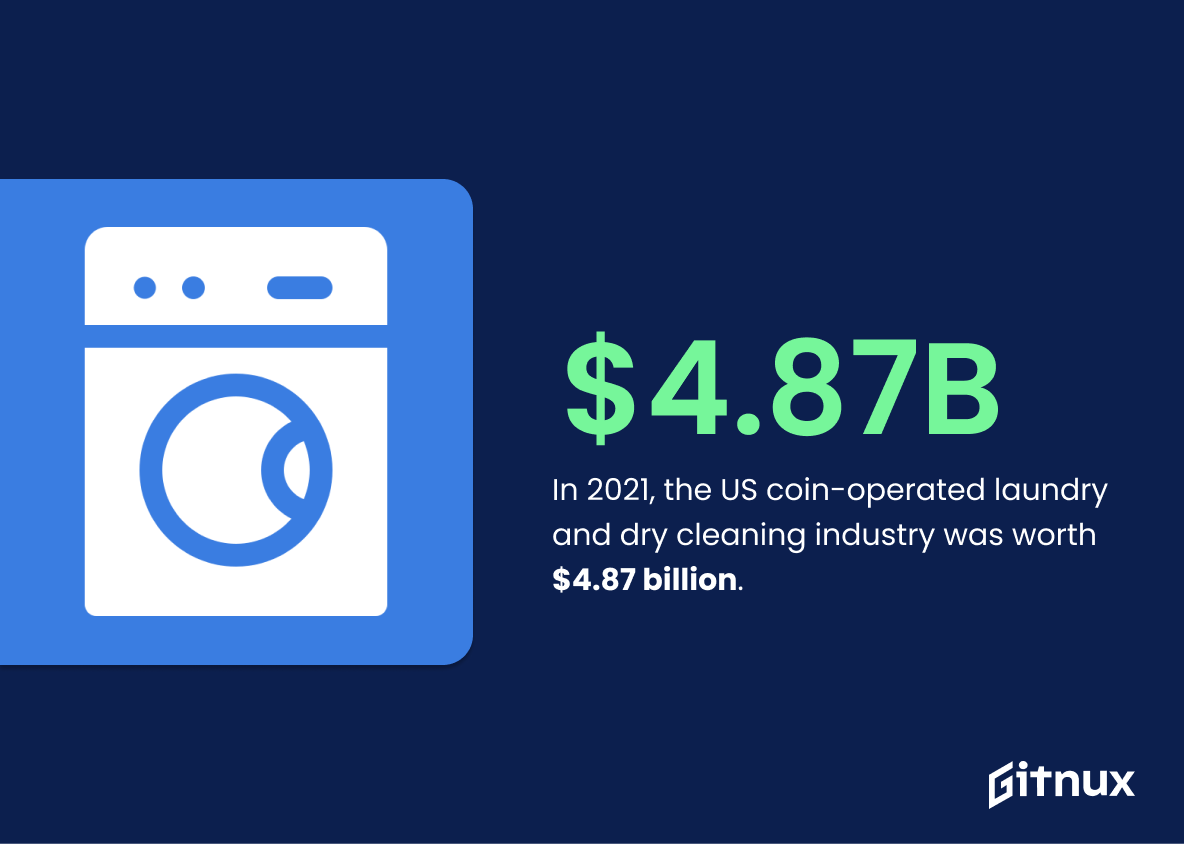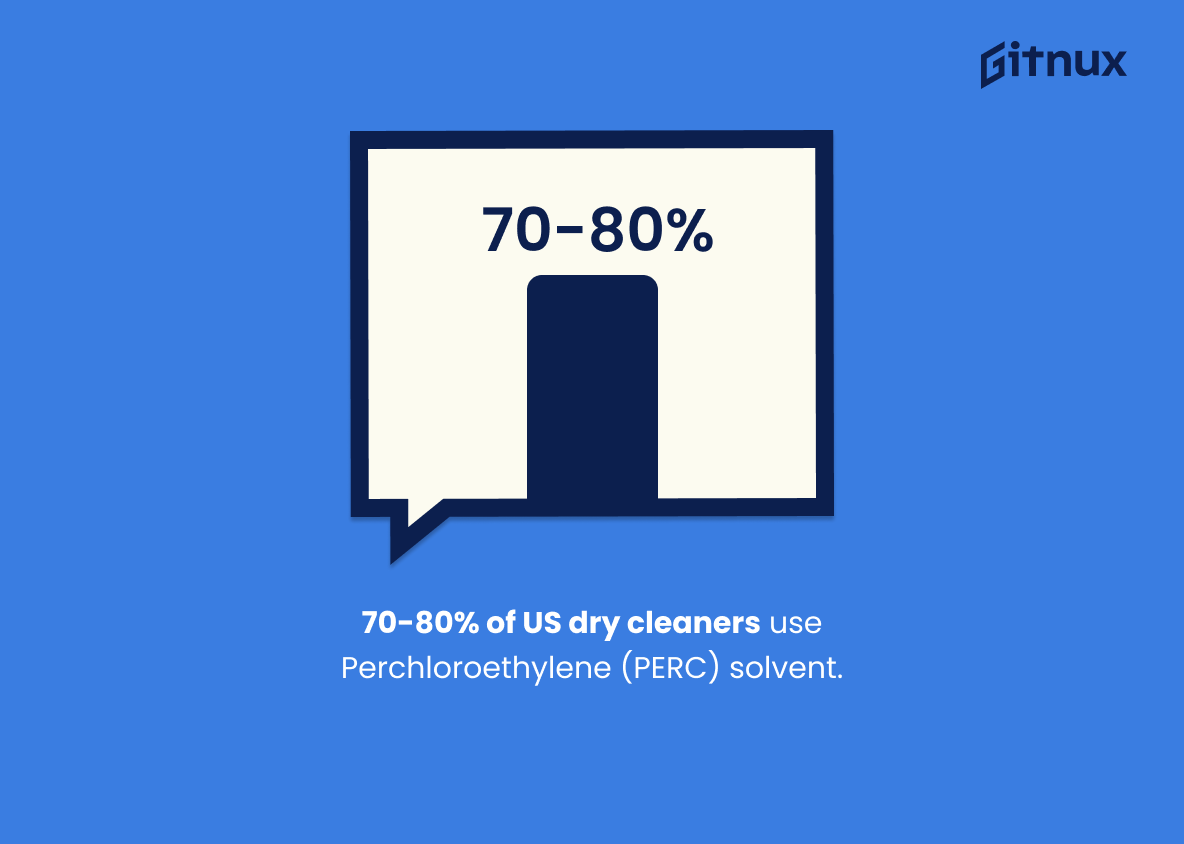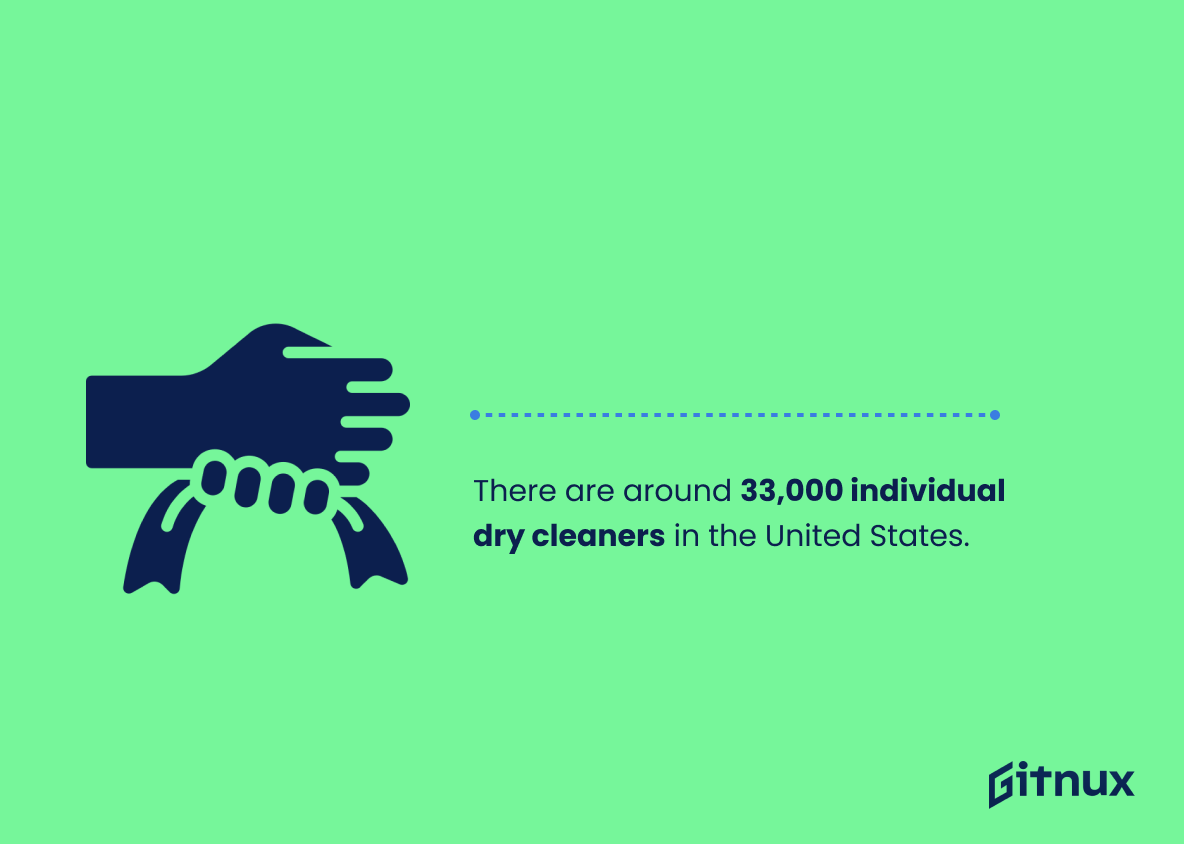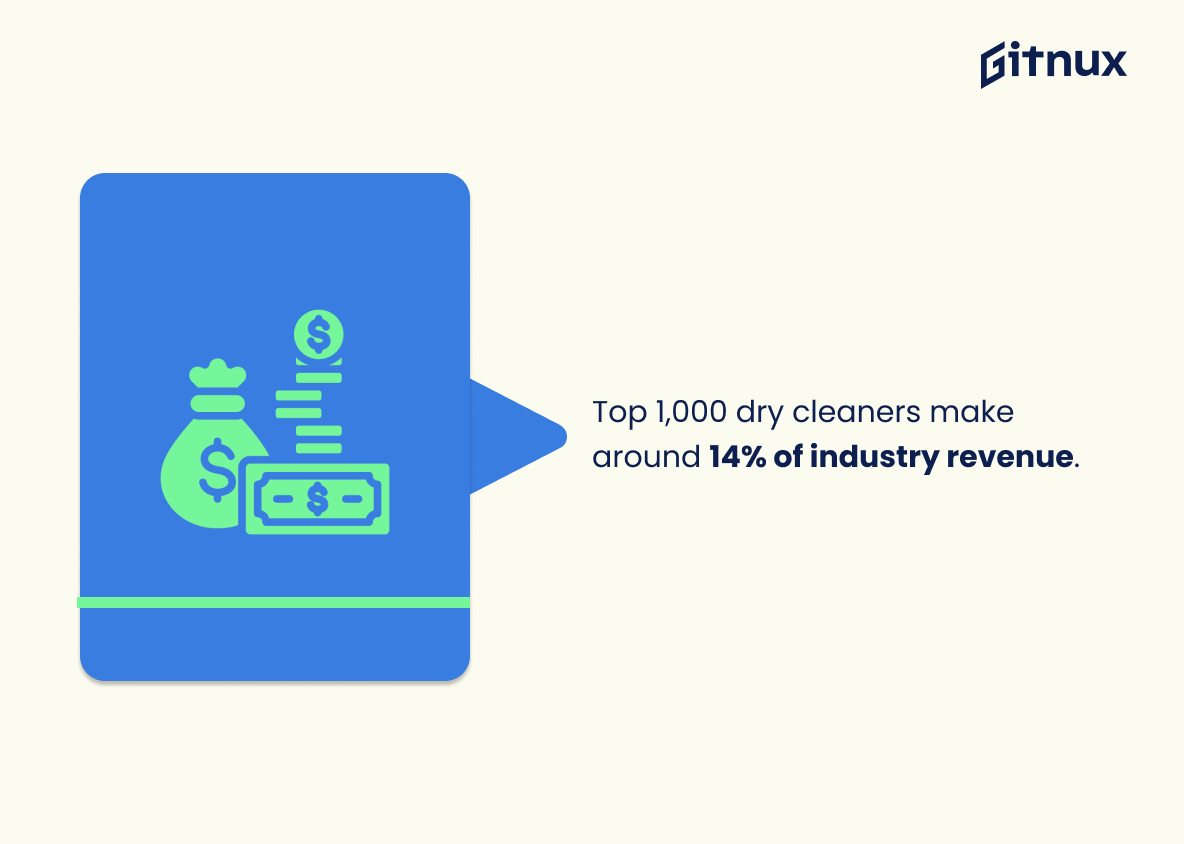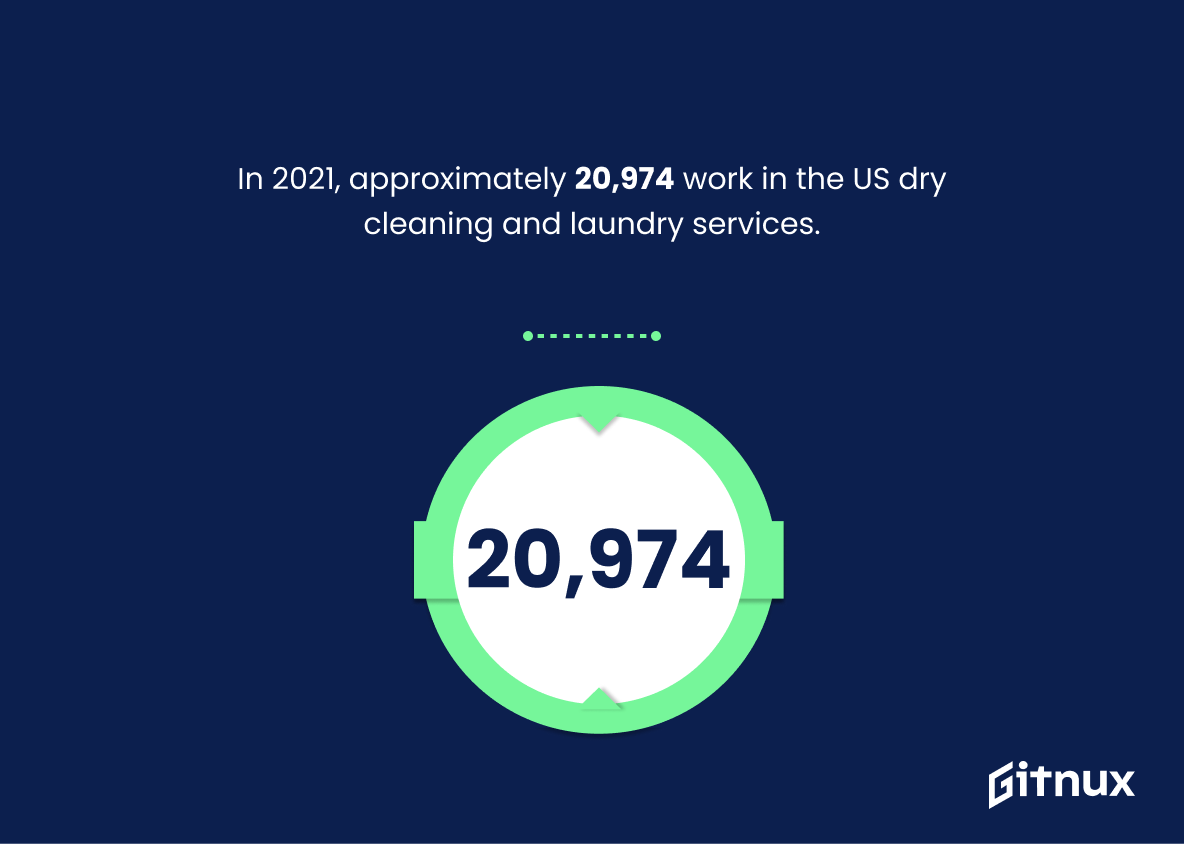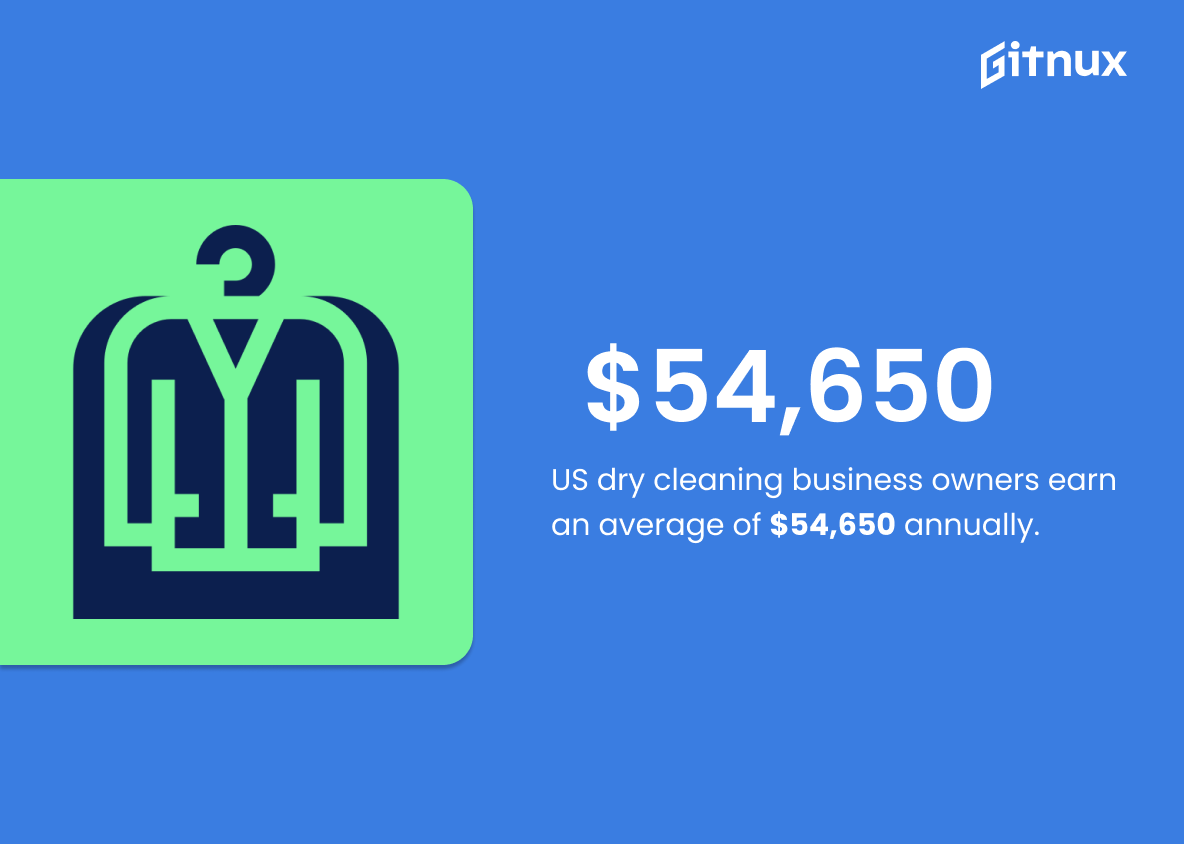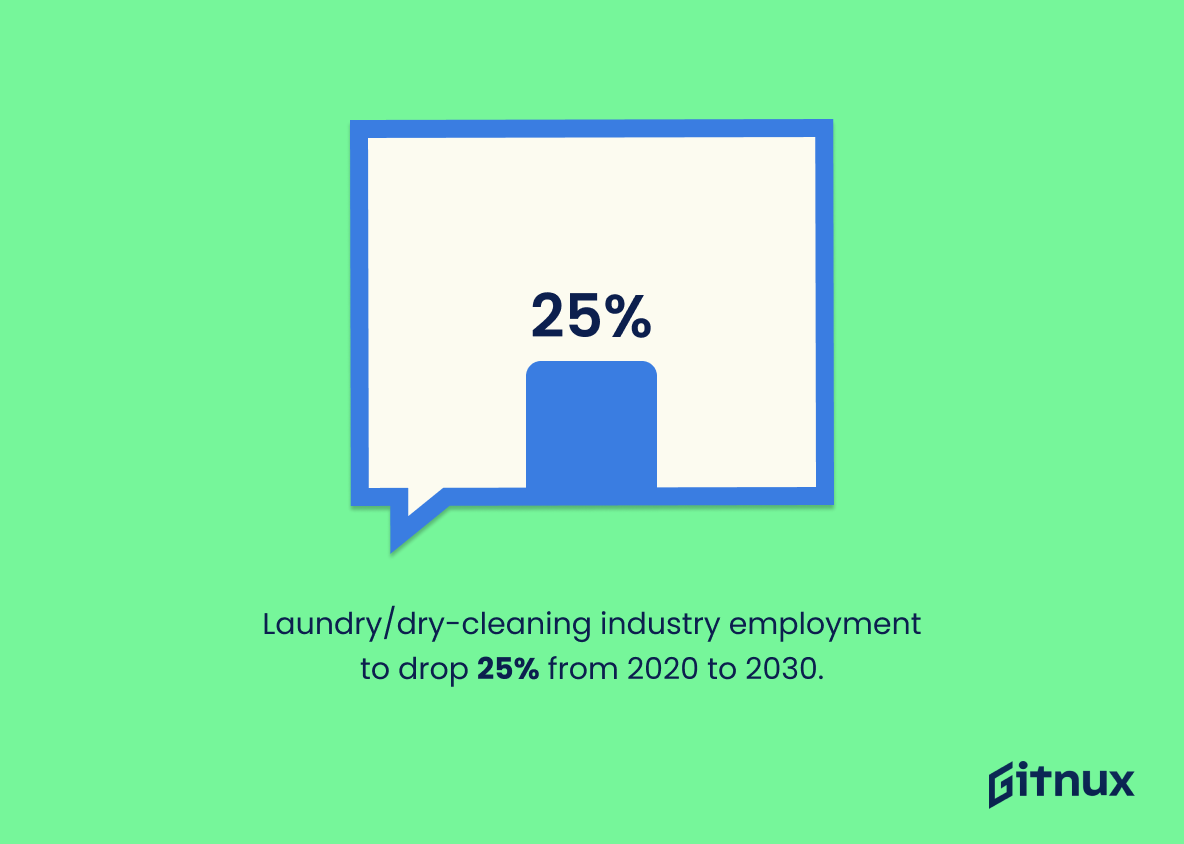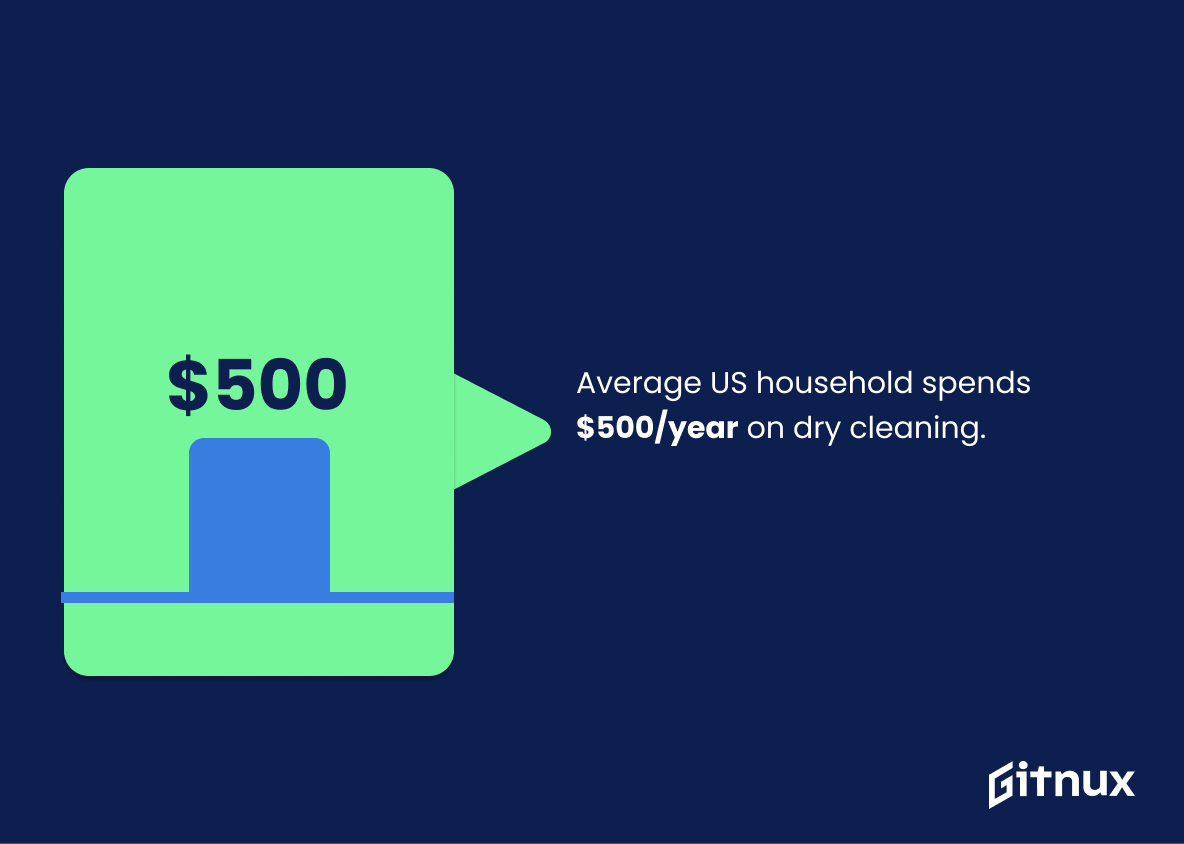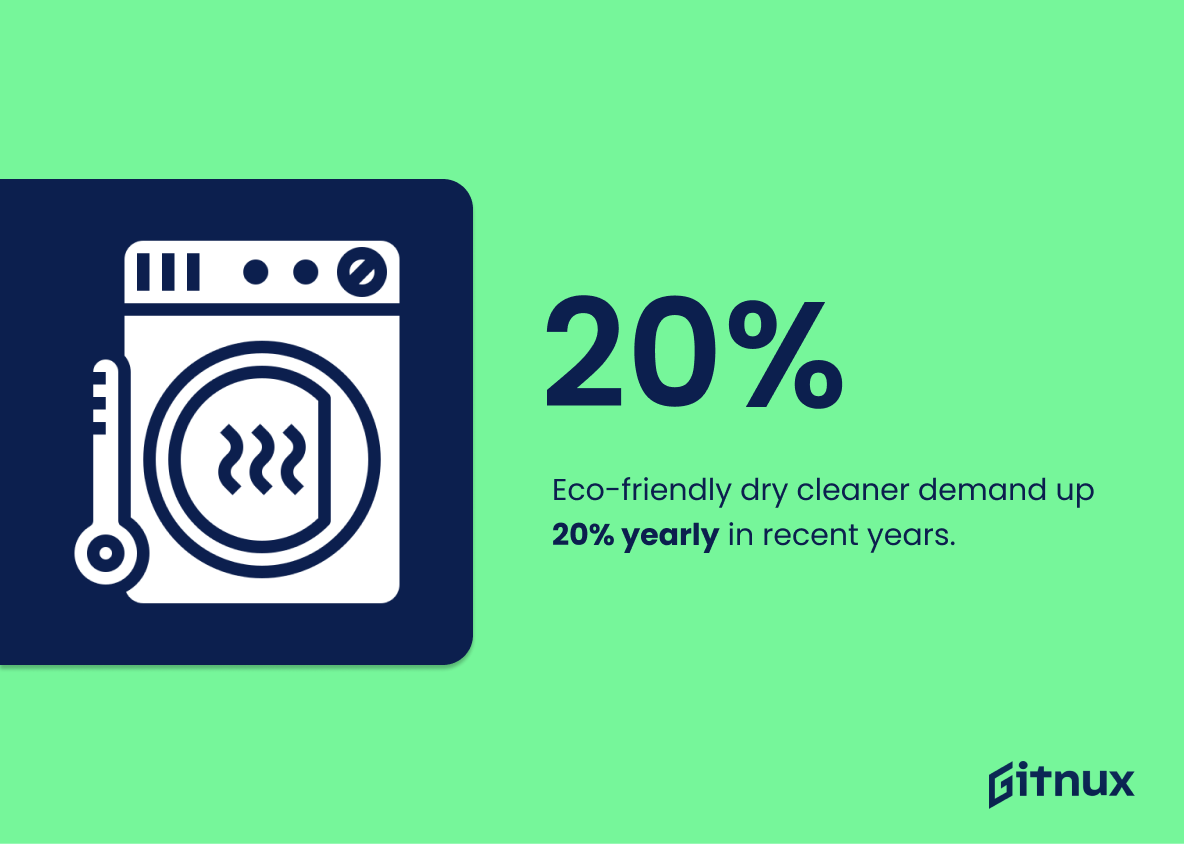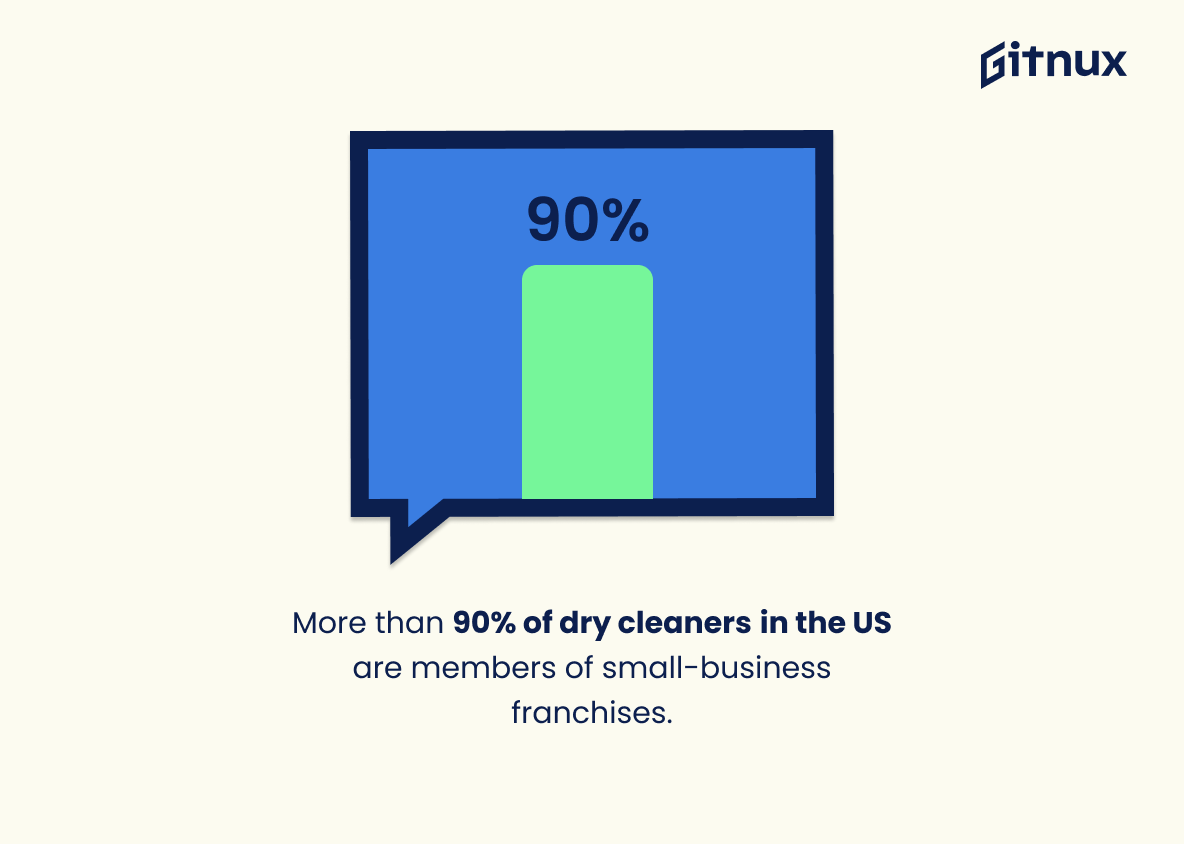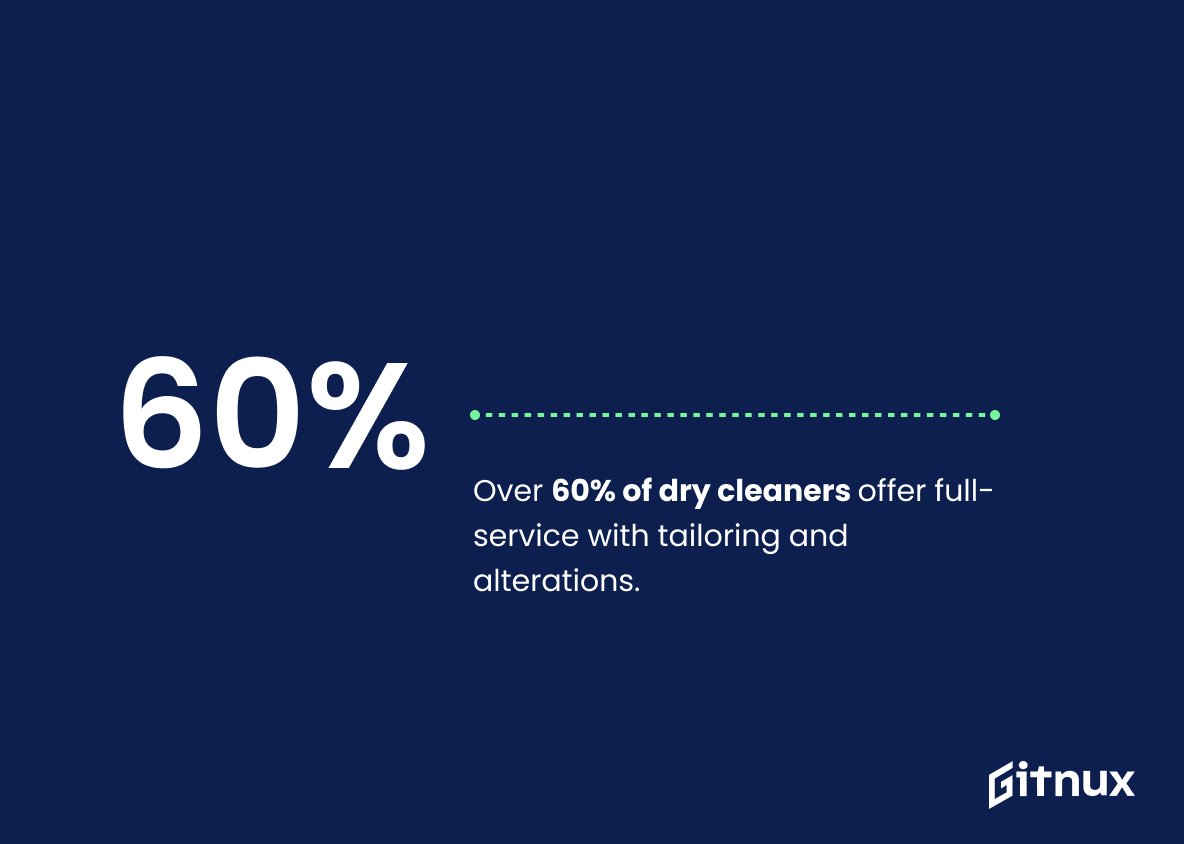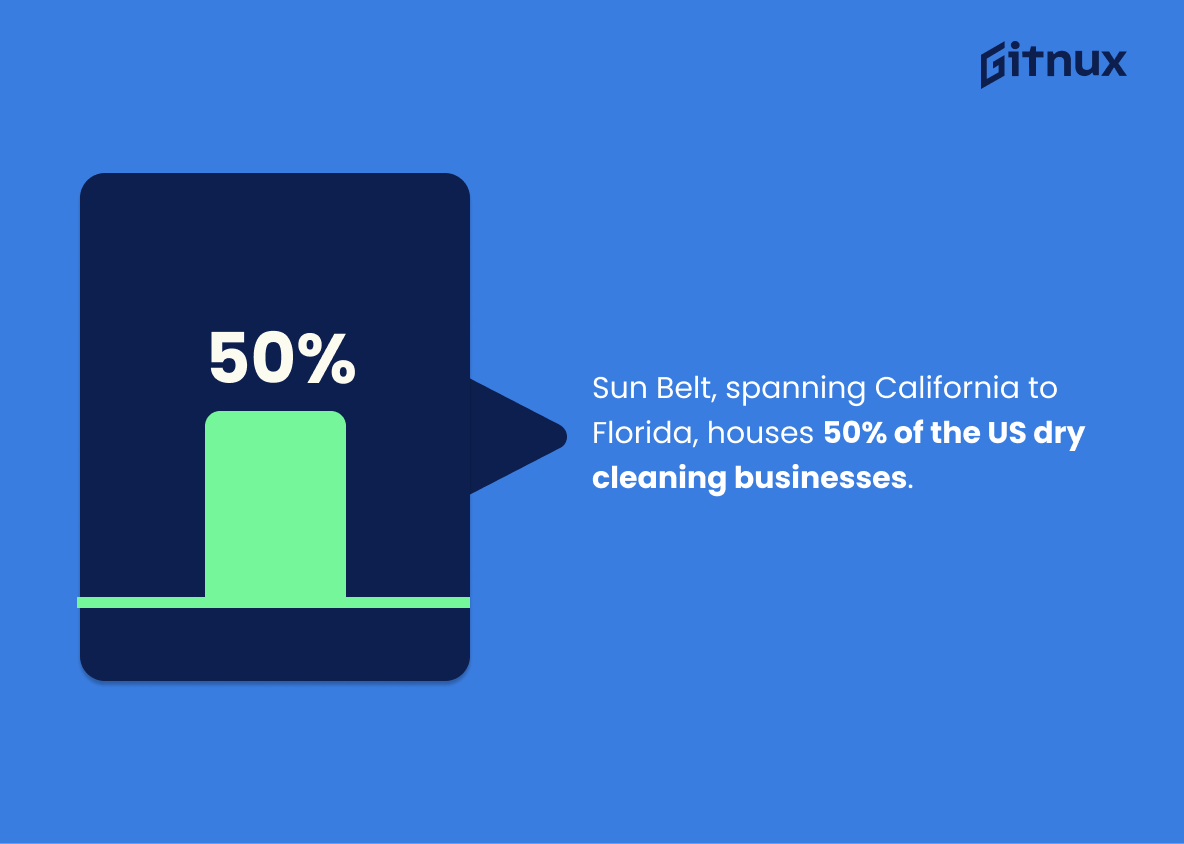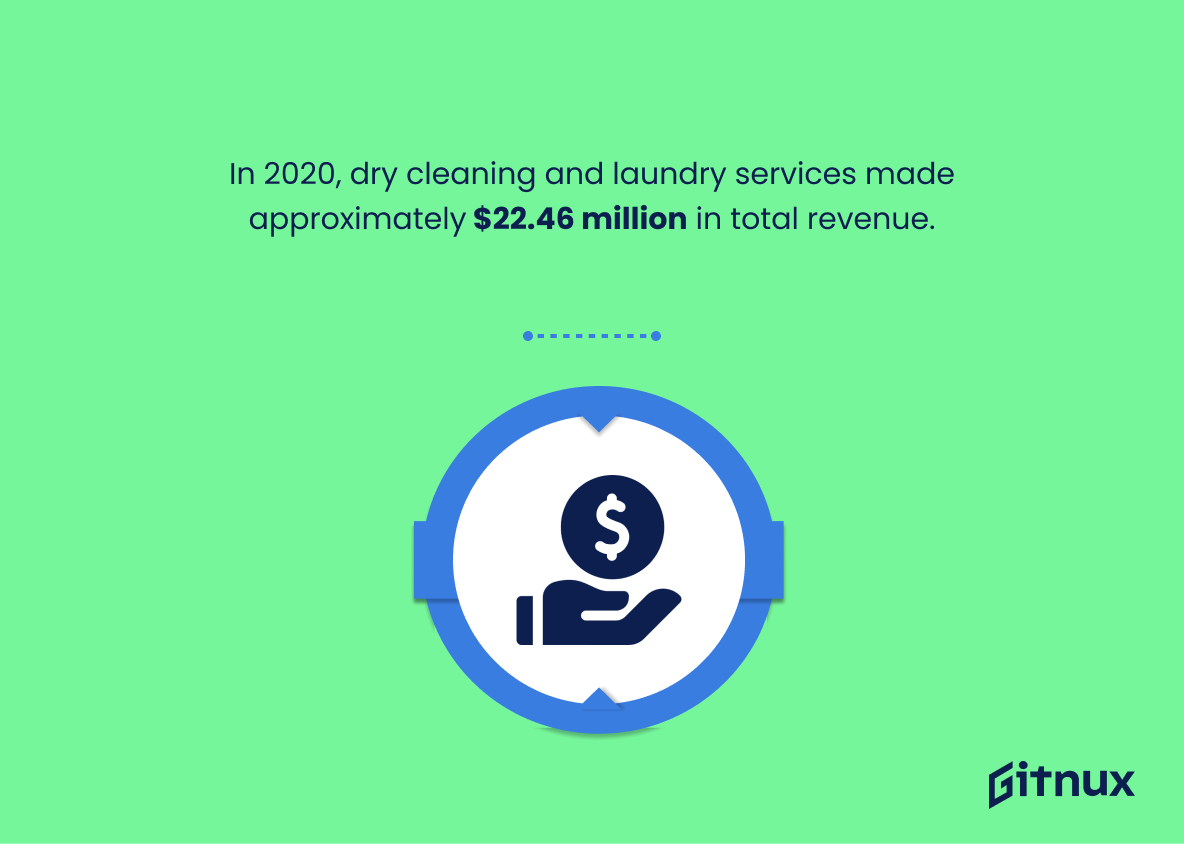The dry cleaning industry is an important part of the global economy, with a market size estimated to reach $180 billion by 2026. In the United States alone, this sector has a market size of $9 billion in 2021 and is expanding at a compound annual growth rate (CAGR) of around 3.4%. The coin-operated laundries and dry cleaners industry within the US was valued at $4.87 billion in 2021 while approximately 70-80% of all American dry cleaners use Perchloroethylene (PERC). There are 33,000 individual businesses operating across America today and these top 1,000 companies generate 14% of total revenue for the entire industry.
In terms of employment figures, there were an estimated 20,974 people employed in this sector as per 2021 data; however it’s projected that employment will decline 25% from 2020 to 2030 due to automation advancements such as self-service laundry machines becoming more popular among consumers. Starting up your own business can be expensive too – equipment costs range between $100k-$500k depending on store setup requirements – but average income for owners stands at around 54K annually which makes it worth considering if you have enough capital available upfront.
It’s also interesting to note that 97 percent are family owned businesses while 60 percent offer extra services like tailoring or alterations alongside their core service offerings; 50 percent operate out Sun Belt states from California through Florida; 22 million dollars was generated in total revenues last year; most target households earning over 75K/year and finally eco friendly options have grown by 20 % each year since 2015 making them increasingly attractive alternatives for customers looking for green solutions when they need something cleaned professionally.
Dry Cleaning Industry Statistics Overview
The coin-operated laundries and dry cleaners industry in 2021 is valued at $4.87 billion within the U.S.
This statistic is a testament to the immense value of the coin-operated laundries and dry cleaners industry in 2021. It speaks to the industry’s importance and relevance in the U.S. economy, and serves as a reminder of the impact it has on the lives of many people. This statistic is a valuable piece of information for anyone looking to gain insight into the dry cleaning industry and its current state.
Approximately 70-80% of dry cleaners in the United States use a solvent called Perchloroethylene (PERC).
This statistic is a telling indication of the prevalence of Perchloroethylene (PERC) in the dry cleaning industry. It highlights the fact that the majority of dry cleaners in the United States rely on this solvent to clean their garments, making it a key component of the industry. This statistic is important to consider when discussing the dry cleaning industry, as it provides insight into the practices and technologies used by the majority of dry cleaners.
There are around 33,000 individual dry cleaners in the United States.
This statistic is a testament to the sheer size of the dry cleaning industry in the United States. It shows that there are a large number of businesses dedicated to providing dry cleaning services, indicating that the industry is a major player in the economy. This statistic is also important for understanding the scope of the industry and the potential for growth.
The top 1,000 dry cleaning companies generate approximately 14% of the total industry revenue.
This statistic is a testament to the power of the top 1,000 dry cleaning companies in the industry. It shows that these companies are responsible for a significant portion of the total industry revenue, indicating their influence and importance in the dry cleaning industry.
In 2021, there are estimated to be 20,974 employees in the US dry cleaning and laundry services industry.
This statistic is a crucial indicator of the size and scope of the US dry cleaning and laundry services industry. It provides a snapshot of the number of people employed in the industry, giving readers an idea of the potential impact of the industry on the economy. Additionally, it can be used to compare the industry’s size to other industries, helping to illustrate the importance of the dry cleaning and laundry services industry.
The average annual income of a U.S. dry cleaning business owner is $54,650 per year.
This statistic is a valuable insight into the financial success of dry cleaning business owners in the United States. It provides a benchmark for aspiring entrepreneurs to measure their own success against, and for existing business owners to compare their own income against. It also serves as a useful indicator of the overall health of the dry cleaning industry.
Employment in the laundry and dry-cleaning industry is projected to decline 25% from 2020 to 2030.
This statistic is a stark reminder of the changing landscape of the dry-cleaning industry. It highlights the need for businesses in this sector to stay ahead of the curve and adapt to the changing demands of the market. It also serves as a warning to those considering entering the industry, as the future of the industry may not be as promising as it once was.
Starting a dry cleaning business can cost between $100,000 and $500,000 for equipment and storefront setup.
This statistic is a stark reminder of the financial commitment required to enter the dry cleaning industry. It highlights the fact that starting a dry cleaning business is no small feat, and that potential entrepreneurs must be prepared to invest a significant amount of capital in order to get their business off the ground.
The average American household spends about $500 per year on dry cleaning services.
This statistic is a telling indication of the importance of dry cleaning services to the average American household. It shows that, despite the convenience of home laundering, many households still rely on professional dry cleaning services to keep their clothes looking their best. This statistic is a valuable insight into the size and scope of the dry cleaning industry, and provides a useful benchmark for understanding the industry’s impact on the economy.
An estimated 97% of dry cleaning companies are family-owned businesses.
This statistic speaks volumes about the dry cleaning industry, highlighting the fact that it is largely dominated by family-owned businesses. It shows that the industry is largely made up of small, independent businesses, rather than large corporate entities. This is important to note, as it can help to inform decisions about the industry, such as how to best support small businesses and how to ensure that the industry remains competitive.
The demand for eco-friendly dry cleaners has grown by 20% per year in the last several years.
This statistic is indicative of a larger trend in the dry cleaning industry: a shift towards eco-friendly practices. As more consumers become aware of the environmental impact of traditional dry cleaning methods, they are increasingly seeking out businesses that offer more sustainable alternatives. This statistic demonstrates the growing demand for these services, and serves as a reminder of the importance of investing in green technologies and practices.
More than 90% of dry cleaners in the US are members of small-business franchises.
This statistic is a testament to the prevalence of small-business franchises in the dry cleaning industry. It speaks to the fact that the majority of dry cleaners in the US are independently owned and operated, and that the industry is largely driven by small business owners. This is an important point to consider when discussing the dry cleaning industry, as it highlights the importance of small business owners in the industry and the impact they have on the overall economy.
More than 60% of dry cleaners are full-service operations providing extra services like tailoring and alterations.
This statistic is a testament to the fact that the dry cleaning industry is not only focused on providing basic cleaning services, but is also committed to providing additional services such as tailoring and alterations. This indicates that the industry is not only concerned with providing a basic service, but is also dedicated to providing a comprehensive service that meets the needs of its customers.
50% of the country’s dry cleaning businesses are located in the Sun Belt, from California to Florida.
This statistic is a telling indication of the importance of the Sun Belt in the dry cleaning industry. It suggests that the region is a major hub for dry cleaning businesses, and that the industry is thriving in the area. This could be due to the region’s favorable climate, or the presence of a large population that requires dry cleaning services. Whatever the reason, this statistic is an important insight into the dry cleaning industry and its importance in the Sun Belt.
Dry cleaning and laundry services generated an estimated $22.46 million in total revenue in 2020.
This statistic is a testament to the success of the dry cleaning and laundry services industry in 2020, despite the challenges posed by the pandemic. It highlights the resilience of the industry and its ability to remain profitable in a difficult economic climate. This statistic is an important indicator of the industry’s overall health and provides valuable insight into the current state of the dry cleaning and laundry services industry.
60% of US dry cleaners target households with incomes above $75,000 per year.
This statistic is a telling indication of the Dry Cleaning Industry’s focus on affluent households. It suggests that the industry is targeting those with higher incomes, likely due to the fact that they are more likely to be able to afford the services. This could be a reflection of the industry’s overall strategy, or it could be a sign of the industry’s lack of focus on lower-income households. Either way, this statistic is an important insight into the Dry Cleaning Industry.
Conclusion
The dry cleaning industry is a large and growing market, with the global dry-cleaning and laundry services market expected to reach $180 billion by 2026. In the US alone, this industry has an estimated total revenue of $22.46 million in 2020 and employs around 33,000 individual businesses. The average annual income for a U.S. dry cleaning business owner is approximately $54,650 per year while starting up such a business can cost between $100,000 – 500,000 for equipment and storefront setup on average American households spend about $500 annually on these services as well as eco-friendly options are becoming increasingly popular due to their environmental benefits which have seen demand grow by 20% each year over recent years . With more than 90% of all companies being family owned operations that offer full service including tailoring & alterations it’s clear why 60% target households with incomes above 75k per annum making them highly profitable ventures within the Sun Belt region where 50% of all establishments reside today
References
0. – https://www.greenamerica.org
1. – https://www.thesimpledollar.com
2. – https://www.ibisworld.com
3. – https://www.fool.com
4. – https://www.statista.com
5. – https://www.globenewswire.com
6. – https://www.marketwatch.com
7. – https://www.startupguys.net
8. – https://www.investopedia.com
9. – https://www.bls.gov
10. – https://www.entrepreneur.com
11. – https://www.garmentcare.com
12. – https://www.smallbusiness.chron.com
13. – https://www.careers.stateuniversity.com
14. – https://www.greenearthcleaning.com
